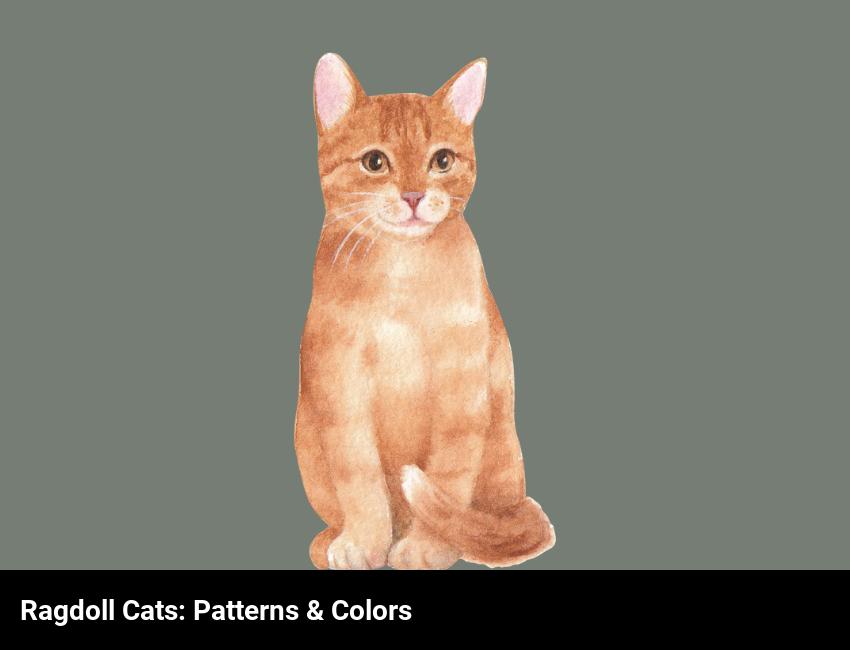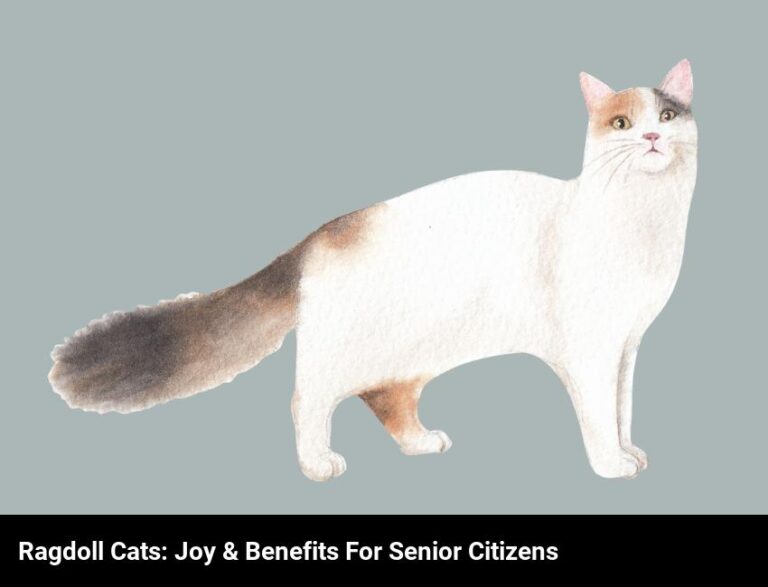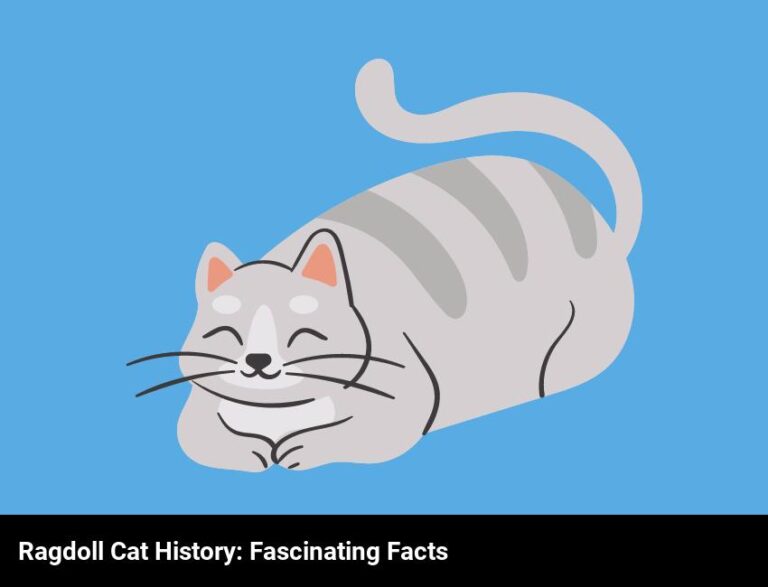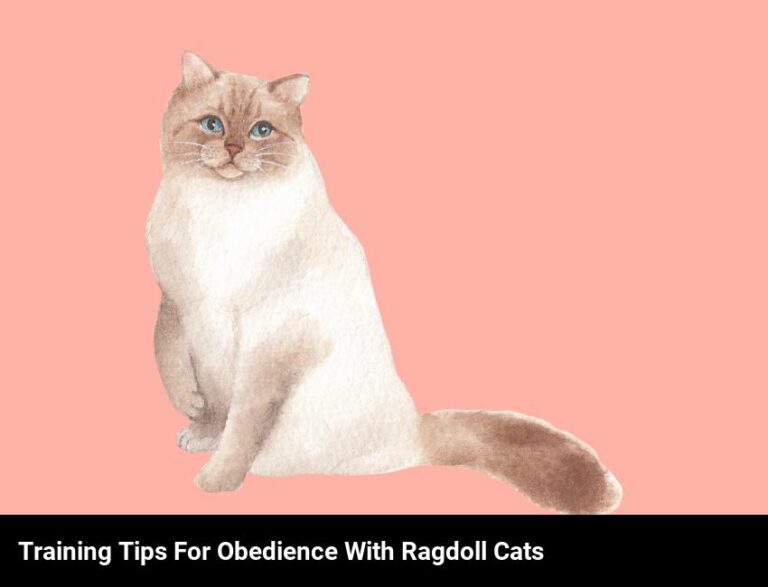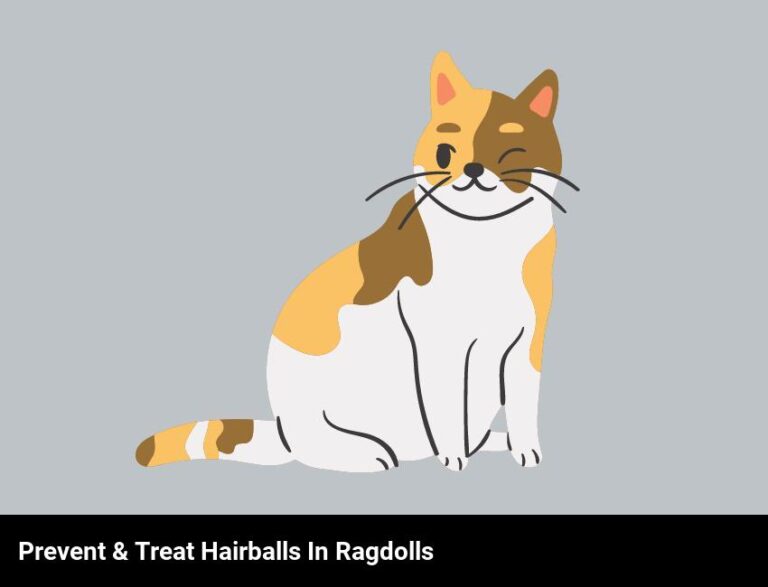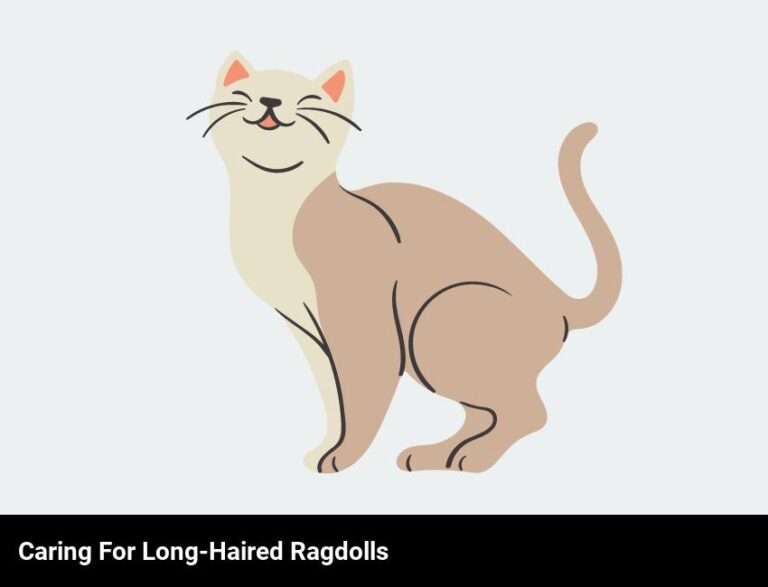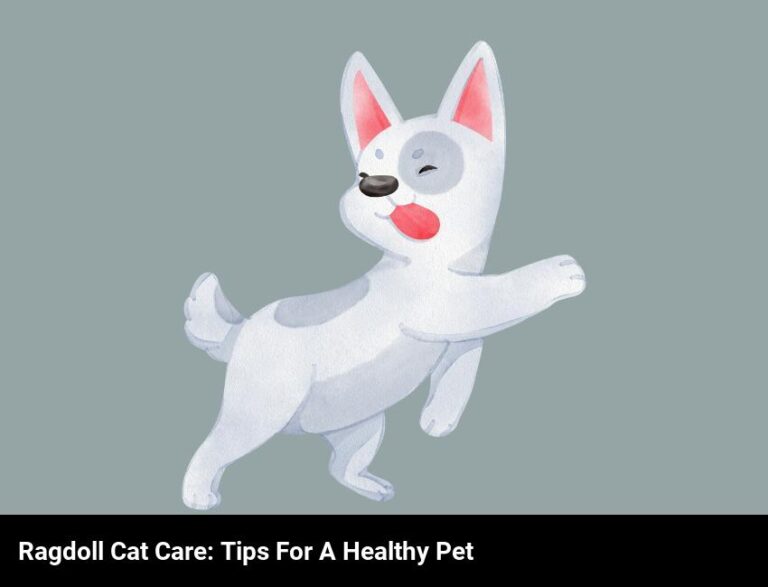Ragdoll Cat Patterns & Colors
Ragdoll cats come in a variety of patterns and colors, including mitted, bi-color, colorpoint, and lynx pattern. These cats can be found in a large number of coat colors, including seal, blue, lilac, chocolate, red, cream, and tortoiseshell.
Growing up, I have always been fascinated by cats. One of my favorite breeds is the Ragdoll cat. Ragdoll cats are known for their soft coats and gentle personalities, and come in a wide range of colors and patterns. But what makes them stand out from other cats? In this blog, I’m going to delve into the world of Ragdoll cats, from their history to their unique patterns and colors.
I’ll also discuss the care and maintenance that Ragdoll cats need, and the potential health concerns associated with them.
What are the different types of ragdoll cats?
When it comes to Ragdoll cats, you’ve got three basic types to choose from: mitted, bi-color and color point. All three can come in a variety of colors and patterns, but they’re all equally cute. Let’s take a closer look at each one!
Mitted Ragdolls are characterized by white paws and legs that look like socks, and white mittens which resemble gloves. They’ll often have a white blaze on the forehead, too, and an inverted V shape on their nose. Mitted Ragdolls can come in a variety of colors, including seal, blue, lilac, chocolate, and red.
Bi-Color Ragdolls, as the name implies, have two colors, usually white and a darker color. The white usually forms a pattern that looks like a “bib”, with the darker color on the rest of the body. These cats can also have a white blaze on the forehead, and an inverted V shape on the nose. Bi-Color Ragdolls come in the same range of colors as Mitted Ragdolls.
Color Point Ragdolls are the most unique of the three types, and are characterized by a darker color on the face, ears, legs and tail, with a lighter color on the body. The face can be a variety of colors and patterns, ranging from tabby markings to solid colors. Color Point Ragdolls come in the same range of colors as the other two types, but with a range of unique face markings.
No matter which type of Ragdoll cat you choose, you’ll end up with an incredibly beautiful and affectionate pet.
What colors and pattern variations are available for ragdoll cats?
If you’re looking for a Ragdoll cat, you’ll be pleased to know that there’s a wide variety of colors and pattern variations available. You can find Ragdoll cats with solid colors, bi-colors, and pointed patterns.
Solid colors come in various shades of black, blues, reds, creams, and chocolate. These colors can range from a light shade to a deep and rich tone.
Bi-colors are a combination of white and a tabby pattern. The tabby pattern can be a mix of colors like black, blues, reds, creams, and chocolate.
The pointed pattern is usually seen in Ragdolls with white fur and darker points. The pointed pattern is particularly popular in Ragdoll cats with the colors of seal, blue, chocolate, and lilac.
No matter which color or pattern variation you prefer, Ragdoll cats are sure to bring lots of joy and love to your life.
How can you tell the difference between a ragdoll cat and other breeds?
Figuring out the differences between a Ragdoll cat and other breeds can be tricky. But if you look carefully, you’ll find that Ragdolls have distinct features that set them apart from other cats.
First, Ragdolls tend to be larger than most other breeds. They also tend to have a much softer, longer coat and a fuller, rounder face. You’ll also notice that Ragdolls have blue eyes, and their fur comes in a variety of patterns, such as mitted, colorpoint, bicolor, and lynx.
Another way to tell the difference between a Ragdoll and other cats is by their personality. Ragdolls are known for their calm and gentle nature. They’re also incredibly affectionate and loving cats, and they often bond deeply with their owners. On the other hand, most other cats are typically more independent and less likely to seek out human attention.
Finally, Ragdolls have a unique trait that sets them apart from other breeds: they tend to go limp when they’re picked up. This is a trait that is specific to the Ragdoll breed, and it’s a surefire way to tell the difference between a Ragdoll cat and other cats.
All in all, if you’re looking to identify a Ragdoll cat, be sure to look for their larger size, soft fur, blue eyes, and unique personality traits. You’ll also be able to tell the difference between a Ragdoll and other cats by their distinct pattern and color variations.
What is the history behind ragdoll cats?
Ragdoll cats have a fascinating history that goes back more than fifty years! Originally bred in the United States in the 1960s by Ann Baker, Ragdolls have become one of the most beloved breeds of cats in the world.
The exact origin of the Ragdoll is a bit of a mystery. It is believed that Ragdoll cats were bred from a white longhaired cat that Ann Baker owned named Josephine. It is thought that Josephine may have been a cross between a Persian and a Birman cat.
Ragdoll cats have become very popular in the last five decades due to their loving and gentle nature. They are known for their tendency to go limp when held, which is why they are called Ragdolls. This breed of cat is known for its sweet disposition, its willingness to be handled, and its affection for its owners.
In the last few years, Ragdoll cats have become even more popular due to their unique coloring and patterns. Ragdolls come in a variety of colors and patterns, including mitted, bicolor, lynx, and colorpoint. These cats are truly one of a kind and are sure to capture the hearts of any cat lover!
Ragdoll cats are truly a unique breed that has a fascinating history. They have become incredibly popular over the last few decades due to their sweet personalities and beautiful coats.
Are ragdoll cats good for families?
Yes! Ragdoll cats are a great fit for families! Their sweet and gentle personalities make them a great pet for households with children or other animals. They’re known for being affectionate and loyal, so you can trust them to show you lots of love. Plus, their beautiful fur and markings come in a variety of colors and patterns, so everyone in the family can find a favorite!
Ragdoll cats come in a variety of colors, from the classic white and blue, to lilac and chocolate. And the patterns they come in are just as varied. Ragdolls can have a tabby pattern, a color point pattern, a mitted pattern, and many more. You can always find the perfect-looking Ragdoll to fit your family’s style.
These sweet cats also tend to be quite good with other animals, making them a good fit for families with multiple pets. They tend to get along with other cats, dogs, and even smaller animals like hamsters, mice, and birds. So you can trust them to be gentle and loving with all of your family’s pets.
Ragdoll cats are also easy to train and care for, making them the perfect pet for busy families. Since they’re so easy-going, they don’t require a lot of time and attention. Plus, they tend to be very tidy and clean, so you won’t have to worry about a lot of messes.
Overall, Ragdoll cats are a wonderful fit for families. With their sweet and gentle personalities, beautiful colors and patterns, and easy-going temperaments, they make the perfect pet for busy households.
What kind of care and maintenance do ragdoll cats need?
When it comes to care and maintenance, Ragdoll cats are fairly low-maintenance. They do need some special attention, however, and if you’re considering adopting a Ragdoll, you’ll want to know what kind of care and maintenance they require.
One of the most important things to keep in mind is that Ragdolls need regular grooming. They have long, silky fur that needs to be brushed regularly to prevent matting and tangles. You should also keep their nails trimmed, and brush their teeth once a week.
Ragdolls are also prone to obesity, so it’s important to make sure they get plenty of exercise and a healthy diet. You should also make sure your Ragdoll receives regular check-ups from a vet to ensure their health.
It’s important to give your Ragdoll plenty of attention and love. They are social cats and need lots of interaction to stay happy and healthy. They’ll also need a safe place to play and explore, so be sure to provide them with plenty of toys and a scratching post.
Overall, Ragdolls are relatively low-maintenance cats, but they do require some special attention. With regular grooming, exercise, and plenty of love, your Ragdoll will be happy and healthy for years to come.
Are there any health concerns associated with ragdoll cats?
Yes, Ragdoll cats have some health concerns associated with them that you should be aware of.
At the top of the list is a genetic heart condition known as hypertrophic cardiomyopathy (HCM). This condition causes the walls of the heart to thicken, which can lead to heart failure if not caught and treated early. To ensure your Ragdoll cat is healthy, make sure to have regular check-ups with your veterinarian and discuss any concerns you may have.
Another genetic health concern with Ragdoll cats is a condition known as polycystic kidney disease (PKD). PKD can cause cysts to form in the kidneys, leading to kidney failure. While this condition can be managed with medication, it is important to discuss any potential health concerns with your veterinarian as soon as possible.
Ragdoll cats may also be prone to hip dysplasia, an inherited condition where the hip joint is malformed. This can cause lameness and pain, and should be monitored by a veterinarian.
Finally, Ragdoll cats may be at risk for obesity due to their lazy nature. Be sure to feed them a balanced diet to help prevent weight gain and ensure your Ragdoll is as healthy as possible.
Overall, Ragdoll cats are generally healthy cats, but they can be prone to certain health concerns. To ensure your Ragdoll is healthy, it is important to monitor their health closely and visit the veterinarian regularly.
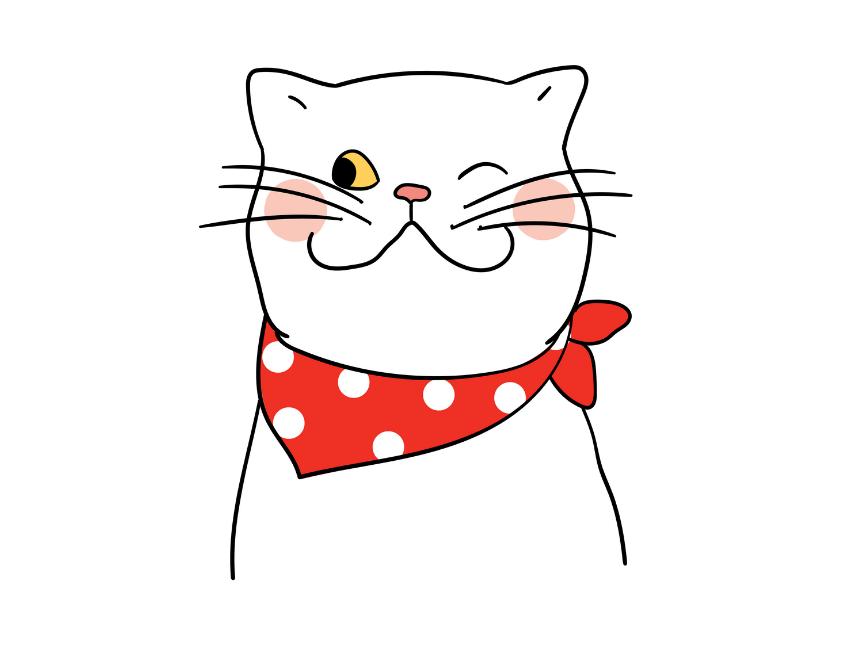
Frequently Asked Questions
What unique patterns can ragdoll cats have?
Ragdoll cats come in a variety of colors and patterns. They can have pointed, mitted, bicolor and solid patterns. Pointed cats have a white base color with darker points on ears, face and tail. Mitted cats have a white base color with darker points plus white paws, chin and belly. Bicolor cats have a white base color with dark points and a dark mask. Solid cats are totally one color, typically seal, chocolate, blue and lilac.
How can i tell if my ragdoll cat is a hybrid?
To tell if your Ragdoll cat is a hybrid, look for distinct color patterns, such as a white mitted pattern with blue eyes. Additionally, the cat should have four white paws and a white belly. If you are still unsure, most breeders can confirm the breed of your cat based on a physical inspection.
How do ragdoll cat colors influence their behavior?
Ragdoll cats come in many different colors and patterns, each of which can have some influence on their behavior. Color and pattern have been known to affect a Ragdoll’s personality, with some cats being more active or laid back than others. For example, the blue and seal points tend to be more active than the mink and solid color Ragdolls. Additionally, the lighter colors are more sensitive to their surroundings and may be easily startled by loud noises. In general, Ragdolls are playful, social cats that bring a lot of joy to their owners.
Are ragdoll cats hypoallergenic?
No, Ragdoll cats are not hypoallergenic. While some cats may not trigger allergic reactions in some people, the breed is not considered to be hypoallergenic. However, if you have allergies, you may still be able to adopt a Ragdoll cat, with the help of your doctor or allergist.
Are ragdoll cats’ coat colors affected by the climate?
No, the coat colors of Ragdoll cats are not affected by the climate. Ragdoll cats typically have one of several distinct coat patterns and colors, including seal, blue, chocolate, lilac, cream, red, and tortoiseshell. Even in different climates, the coat colors of Ragdoll cats remain the same.

